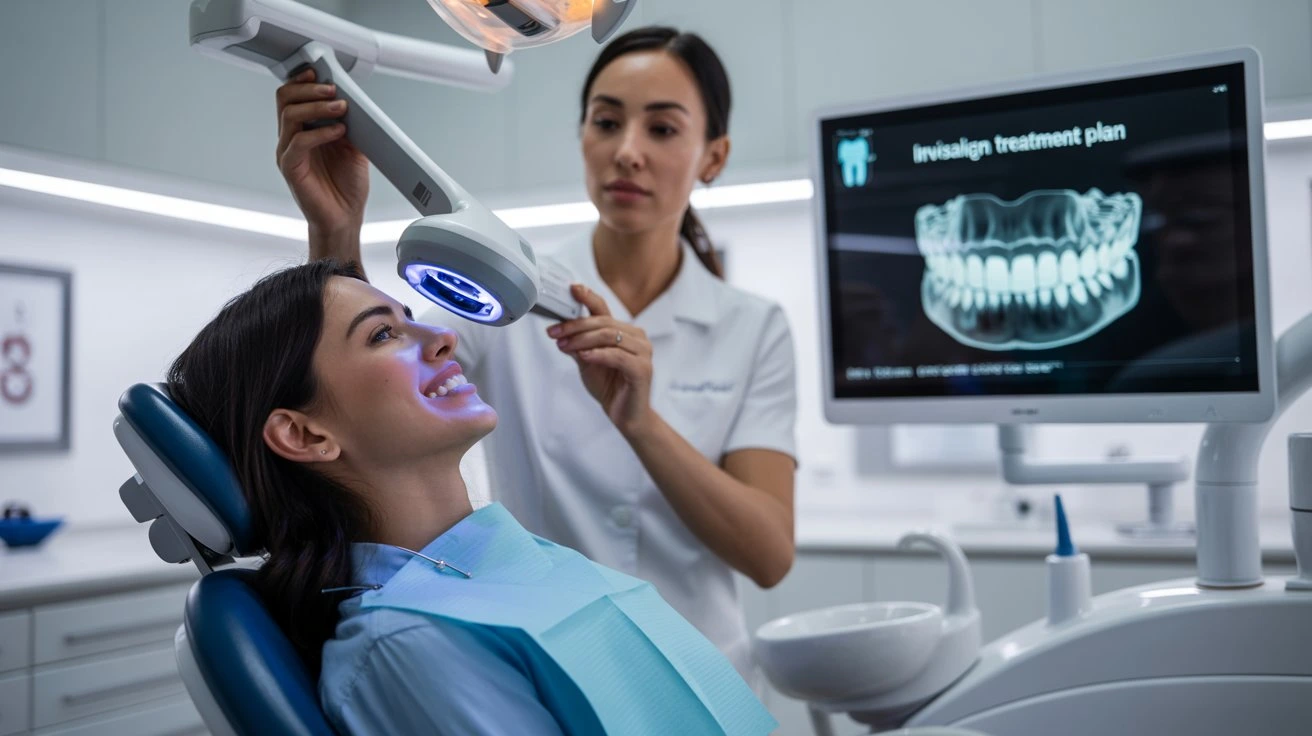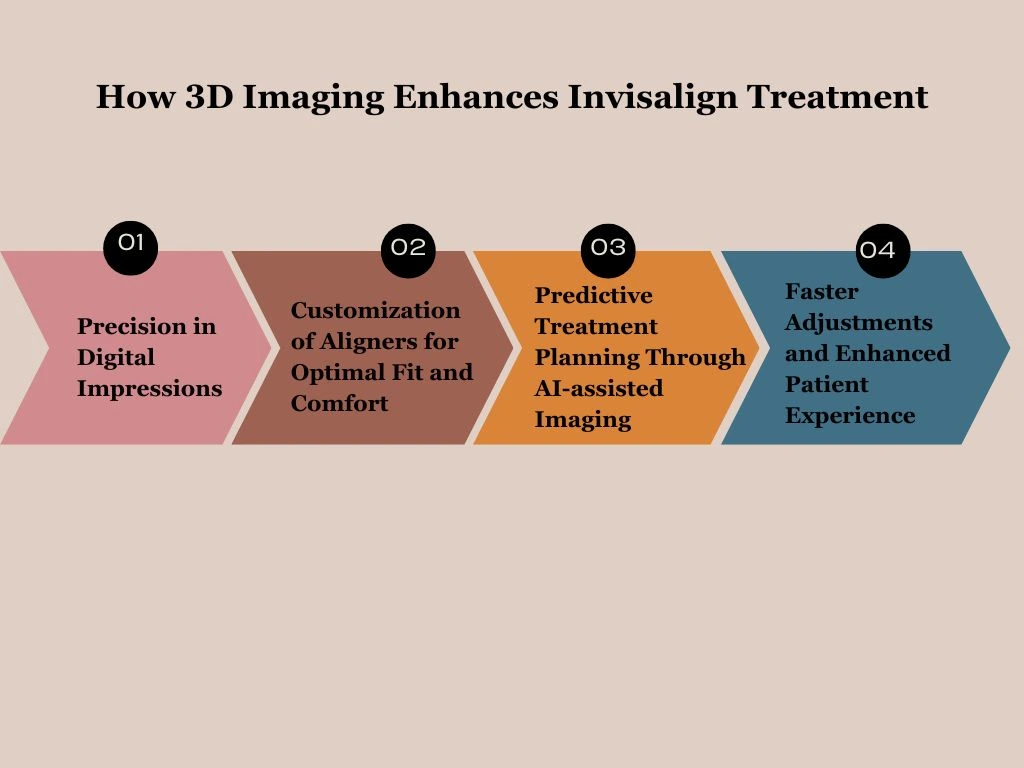
VISITING HOURS:
Week Days - 9 am to 8 pmSundays - Only Emergency Cases
The Role of 3D Imaging in Invisalign Treatment
Invisalign has become a popular alternative to traditional braces, offering a more convenient and effective way to straighten teeth. Invisalign stands out because each aligner is specifically designed to fit each patient. With the help of advanced imaging technology, or 3D technology, the braces are designed to ensure better precision. It is also convenient in many ways, such as cutting short your dental visits, ensuring faster results, and having almost zero downtime during the treatment. This blog gives an idea about the important role 3D imaging plays in creating clear aligners that hug your teeth perfectly.
The Evolution of Invisalign Treatment
Orthodontics traditionally used metal braces. Although effective, braces are quite high maintenance. Patients would have to go to the dentist often to get their braces adjusted. With braces come wires, brackets, and dietary limitations. With the introduction of clear aligners, making your teeth straighter is now easier than ever. People are now switching to Invisalign treatments because they are more discreet, comfortable, and you can remove them according to your convenience.
3D Imaging has also aided the manufacture of Invisaligns. With the help of digital scans, we can prevent messy moulds. Along with AI-assisted treatment planning, it predicts how teeth would align themselves into shape. With upcoming technologies, orthodontists can craft braces that fit patients’ teeth perfectly, yielding better and faster results.
Dental clinics all over the world have now adopted 3D imaging technology to make accurate diagnoses, accurate treatment plans, and increase patient satisfaction. As more dentists are leveraging this technology, 3D imaging is set to transform the face of orthodontic care as it makes Invisalign a more accessible treatment.
Understanding 3D Imaging in Dentistry
3D imaging has changed how dentists diagnose problems and plan treatments by giving doctors precise, three-dimensional pictures of the inside of the mouth. 3D imaging procures complete scanning, offering dentists a very accurate view of teeth, bone densities, and tissue conditions. In contrast, regular X-rays give flat views of objects.
Some of the high-tech imaging tools in orthodontics are:
Cone Beam Computed Tomography (CBCT): This form imparts images clearly while using very little radiation and hence is the best solution for examining jaw alignments and internal irregularities.
Intraoral Scanners: The intraoral scanner can be used to take digital impressions in lieu of regular cast impressions.
Optical Imaging: This method employs light from the epidermis to generate detailed maps to ensure more targeted therapy.
Also read: How Long Does Invisalign Take to Straighten Your Teeth?
Advantages
The 3D image scanning and imaging techniques significantly aid in dental diagnostics. 3D imaging develops a more accurate treatment plan, causes less patient discomfort because of the elimination of physical impressions, and predicts tooth alignment. Orthodontists can spell out problems ahead of time so that treatment time can be reduced while being made more efficient.
This is especially true for Invisalign procedures, where precision and alignment are key to success. As technology keeps getting better, 3D imaging is setting new standards for modern dentists. This makes treatments more comfortable and reliable for patients.
How 3D Imaging Enhances Invisalign Treatment

The following is a brief overview of how 3D imaging enhances Invisalign treatment:
Precision in Digital Impressions: Traditional casts were often painful and inaccurate, which meant that aligners did not fit perfectly. A 3D intraoral scanner generates highly detailed digital images, which ensure the accuracy from the beginning of the treatment. Digital impressions make for a happy patient as there is no messy material involved, and a few minor adjustments do not interfere with their patience, thereby hastening treatment.
Customisation of Aligners for Optimal Fit and Comfort: Invisalign aligners are made with 3D images for the specific and perfect fit of the patient's teeth for accurate treatment. Precise scans allow an orthodontist to make aligners that softly and just about apply the exact pressure on the teeth being moved, while putting little or no discomfort felt by the patient. The better the fits, the less pain the patient experiences, and the sooner the results, along with their aligner,s do exactly what they are supposed to.
Predictive Treatment Planning Through AI-assisted Imaging: 3D scans are examined and an AI predicts the change of tooth position as time passes by from that perspective, thus assisting orthodontists to come up with an accurate treatment procedure. Patients thus get to see a picture pre-treatment which shows how their teeth will move. This feature helps them understand what to expect. When orthodontists can see problems coming, they can make changes early on, which speeds up treatment and improves long-term results.
Faster Adjustments and Enhanced Patient Experience: The 3D imaging is a way for orthodontists to quickly adjust treatment plans with new working scans instead of relying on traditional paper impressions. Changes to a treatment plan are implemented on the aligners quickly and accurately, reducing the number of visits the patient requires. Treatment then becomes smoother, more predictable, with fewer trials, which ultimately leads to a better result.
Future of 3D Imaging in Orthodontics
These recent three-dimensional imaging approaches improve safety and accuracy by decreasing the amount of radiation while increasing resolution, a training goal. In Tableau treatment designing, it may be possible by means of AR and simulation to enable the customer to visualise his or her Invisalign outcome before commencing treatment. Another breakthrough with orthodontic treatment planning is that AI-based algorithms can accurately predict tooth movement from 3D images so that aligners can be manufactured. Machine learning models refine adjustments in real-time, eliminating manual changes and speeding up the process. These advances should improve treatment efficiency and precision. Fast processing and automation of the 3D scans are responsible for speeding up the Invisalign customization process, thereby allowing patients a shorter waiting period. Better imaging leads to better aligners, which means fewer adjustments, shorter treatment time, and a more successful and accessible orthodontic therapy. As technological boundaries keep expanding, 3D imaging will dominate the future of Invisalign treatments.
To conclude, 3D imaging is an integral part of Invisalign treatment because it ensures that the digital images obtained are accurate, that the aligners are custom-made for each patient, and that the treatment plans are correct. It eliminates the need for conventional moulds, improves fit and comfort, and offers enhanced predictability for orthodontists to judge how their teeth will move. The whole patient experience is made better because it is quick, comfortable, and well-organised. This consequently leads to the best therapeutic results. From the improvement or sophistication of AI and image technologies, we foresee good results and better accessibility of Invisalign treatment. Dentique The Dental Studio leverages advanced 3D imaging to ensure precise, customised Invisalign treatment with faster, more predictable results.
For more assistance and guidance, get in touch with us.
OUR
TREATMENTS
TREATMENTS








